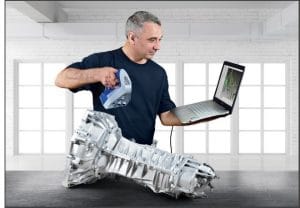Using 3D Scanners to Digitize Real-World Objects
 Engineers today have a wide array of software in their virtual toolbox which they can use to create precise 3D representations of designed models. However, the typical old school manufacturing facility contains an abundance of legacy components, worn out tools and other parts which may not have accurate CAD data associated with it.
Engineers today have a wide array of software in their virtual toolbox which they can use to create precise 3D representations of designed models. However, the typical old school manufacturing facility contains an abundance of legacy components, worn out tools and other parts which may not have accurate CAD data associated with it.
Enter 3D scanning, a technology integral to the progression of manufacturing through what is described as ‘the fourth industrial revolution’.
Industry 4.0
In an interview with Dr. Siegfried Dais, former CEO of Robert Bosch GMbH, Markus Löffler of Mckinsey and Associates explains the fourth industrial revolution, also known as industry 4.0, as “a new wave of technological changes that will decentralize production control and trigger a paradigm shift in manufacturing.” Dr. Dais adds that “…it is highly likely that the world of production will become more and more networked until everything is interlinked with everything else” in the Internet of Things.
The Internet of Things
With new technologies and connectivity shaping the Internet of Things, high accuracy scanning will play a key role in an engineer’s ability to bridge the gap between old and new manufacturing methodologies. By collecting 3D data of a physical part, also known as a ‘point cloud’, engineers now have the ability to automate the transformation of an object into a fully parametric 3D CAD model for further design or fabrication.
Data is king
In the era of smarter product development processes, data is king. Structured light scanning enables industry professionals to have data-rich insight for  manufacturing tasks such as quality control, reverse engineering, rapid tooling, and other fabrication outputs.
manufacturing tasks such as quality control, reverse engineering, rapid tooling, and other fabrication outputs.
Artec 3D makes these applications available by delivering 3D scanning hardware to the fingertips of manufacturing engineers. For many whose daily activities move between a production floor to an office setting, the ability to easily generate a quick scan with accuracy and portability has clear workflow benefits.
Learn More
You can see an Artec 3D scanner demonstration in this video.
About the Author
Danny Jackson Levy is a cross-functional design engineer, providing technical expertise for the integration of turnkey advanced manufacturing processes. He joined the Fisher Unitech team as a 3D Printing Application Engineer in August of 2015. Danny began his journey with 3D Printing technology in the startup world, and later worked with Duke University to develop college level 3D design and printing curricula. At Fisher Unitech Danny takes lead for healthcare and dental applications with the intent to evangelize additive manufacturing technology for personalized medicine. He hopes to one day 3D print a heart valve for his sister who was born with a ventricular septal defect. Follow his adventures on Instagram @Noosphere3D

 Blog
Blog